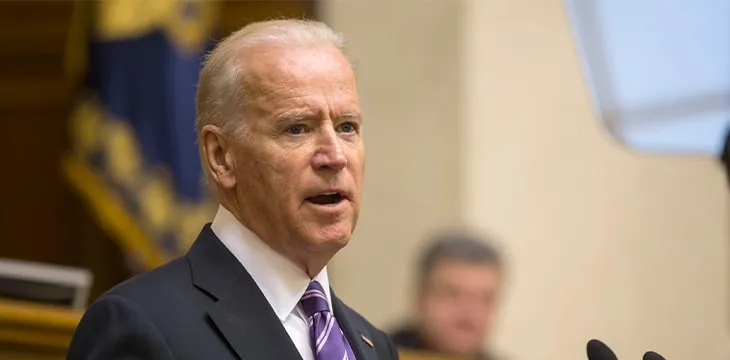|
Getting your Trinity Audio player ready...
|
The U.S. government continues to warn ‘crypto’ criminals that regulation of the digital asset sector is coming, even if it still isn’t entirely sure what those regulations might look like.
On September 15, the U.S. Senate Agriculture, Nutrition and Forestry Committee held a hearing on the Digital Commodities Consumer Protection Act (DCCPA), which was introduced in August. The DCCPA’s primary aim is to establish the Commodity Futures Trading Commission (CFTC) as the main regulatory agency overseeing the two largest digital assets by market cap, BTC and ETH, and any others that might be viewed as commodities rather than securities.
Given that the Committee’s chair and ranking member were among the senators who introduced the DCCPA, the hearing was basically a lovefest intent on stressing the CFTC’s ability to handle crypto regulation. CFTC chair Rostin Behnam promised that his outfit would cooperate with the Securities and Exchange Commission (SEC) to ensure oversight of the whole digital assets sector but the Committee largely dismissed concerns that the bill would erode the SEC’s authority over securities. Behnam agreed, despite the fact that the DCCPA would allow the CFTC broad authority in determining which tokens are commodities and which are securities.
Many prominent digital currency exchanges, including Sam Bankman-Fried’s FTX, have lobbied hard to promote the CFTC as deserving of the preeminent role in overseeing digital assets. Critics say this push is in part due to the CFTC’s less robust enforcement capacity, which the exchanges are counting on to ensure their ongoing shenanigans go unpunished.
The DCCPA would impose user fees on digital asset platforms to help fund the CFTC’s oversight, and Behnam said the CFTC couldn’t perform its job without this extra cash. For exchanges, this toll seems a small price to pay to ensure the more aggressively anti-crypto SEC is relegated to a limited oversight role.
Neither the DCCPA nor its rival (the Responsible Financial Innovation Act) are expected to receive Senate floor votes before Congress adjourns for the mid-term election cycle. Hearings like last week’s event are largely performative, aimed at ensuring a fresh injection of lobbying cash when Congress returns in 2023.
Just the facts, ma’am
The day after the Committee hearing, the White House issued a fact sheet detailing the government’s progress on creating its First-Ever Comprehensive Framework for Responsible Development of Digital Assets. The announcement follows up on the executive order President Biden issued in March directing federal agencies to work together to craft some kind of overarching response to the threats, challenges and opportunities of digital assets.
A lot has happened in cryptoville since March, and the fact sheet notes the crash of Terra Labs’ ill-fated algorithmic stablecoin, which started a cascade of insolvencies that “wiped out over $600 billion of investor and consumer funds.” The Financial Literacy Education Commission (FLEC) has since been tasked with educating consumers on the risks of sinking anything other than purely discretionary income into digital assets.
Of the reports that agencies have to date submitted to Biden for consideration, a key plank is a call for “measures to mitigate the downside risks, like increased enforcement of existing laws.” The fact sheet also calls on both the SEC and CFTC to “aggressively pursue investigations and enforcement actions against unlawful practices” by digital asset firms.
Last week, we saw a sign of potential measures that may be in the works when SEC chair Gary Gensler strongly suggested that Ethereum’s transition from a proof-of-work consensus mechanism to a proof-of-stake system had reinforced the SEC’s view that ETH tokens are unregistered securities as defined under existing laws.
And justice for all
Earlier this month, the Department of Justice issued a report in response to Biden’s executive order. Attorney General Merrick Garland said The Role of Law Enforcement in Detecting, Investigating, and Prosecuting Criminal Activity Related to Digital Assets reflects the DoJ’s commitment to “meeting the unique challenges these technologies pose.”
Much of the DoJ report is a recap of existing policies and concerns, including the use of digital assets/technologies to facilitate money laundering, ransomware and terrorist financing. These include everything from decentralized finance (DeFi) platforms to non-fungible tokens (NFTs). The DoJ also takes several victory laps over recent prosecutions of high-profile crypto crooks.
But the DoJ also proposes doubling the current five-year statute of limitations on crypto crimes “to account for the complexities of digital assets-related investigations.” A similar call is made for “a longer period of tolling (or ‘suspension’) of the limitations period when the United States’ official request to obtain foreign evidence pertains to an offense involving the transfer of digital assets.”
Perhaps the most interesting aspect of the DoJ’s announcement is the establishment of the nationwide Digital Asset Coordinator (DAC) Network, which comprises “over 150 designated federal prosecutors from U.S. Attorneys’ Offices and across the department’s litigating components.” The DAC held its first meeting on September 8 of this year.
The DAC Network is overseen by the DoJ’s new National Cryptocurrency Enforcement Team (NCET), which is led by cybercrime prosecutor Eun Young Choi. The NCET has “a particular focus on crimes committed by exchanges, mixing and tumbling services, and money laundering infrastructure actors.”
Treasure these moments
The DoJ wasn’t the only official body issuing reports last week. The White House Office of Science and Technology Policy issued a report on the technical challenges of the U.S. launching a Central Bank Digital Currency, while the Department of Commerce discussed the ins and outs of Responsible Advancement of U.S. Competitiveness in Digital Assets.
On Monday, the Department of the Treasury issued a request for comment on “the digital-asset-related illicit finance and national security risks as well as the publicly released Action Plan to mitigate the risks.” Concerned citizens have been asked to respond to the 20 posted questions by November 3.
The Treasury has been asked to complete an illicit finance risk assessment for DeFi by next February and a similar assessment for NFTs by July 2023. In the meantime, the Treasury released three separate reports on Friday: the aforementioned Action Plan to Address Illicit Financing Risks of Digital Assets; as well as Crypto-Assets: Implications for Consumers, Investors, and Businesses; and The Future of Money and Payments.
Like the DoJ’s report, the Treasury docs contain a lot of previously published information. For instance, the Action Plan cites a litany of concerns regarding crypto criminality featuring the usual suspects (ransomware, drug trafficking and terrorism). The Treasury acknowledges that traditional fiat currencies still take precedence over digital assets when it comes to these criminal activities, but the Plan does make special note of ransomware actors demanding to be paid in ‘anonymity-enhanced cryptocurrencies’ such as Monero or Zcash.
The Plan identifies virtual asset service providers (VASPs) with shoddy or non-existent anti-money laundering (AML) programs as presenting “the most significant illicit financing risk associated with virtual assets.”
Similarly, individuals using ‘unhosted’ digital wallets to engage in P2P transfers present significant challenges for regulatory watchdogs. So-called ‘money mules’ and other P2P service providers are flagged for assisting individuals in converting illicit funds from digital to fiat.
The Plan also warns that DeFi services’ use of smart contracts to allow automated P2P transfers “may be decentralized only or partly in name,” leaving the controlling organization responsible for proper AML controls.
Perhaps most ominously for VASPs, the Plan suggests “continued consideration” of an idea initially proposed in 2020 that would have lowered the threshold for collecting, retaining and transmitting data on fund transfers and transmittals from $3,000 to just $250.
While major banks already collect this information, the proposal was withdrawn in 2021 due to the considerable burden it would have imposed on money service businesses (MSBs), a category that includes VASPs. While any such reconsideration is for the moment entirely theoretical, expect exchanges to scream bloody murder if this idea gains traction in Washington.
You pretend to issue rules, we pretend to comply
Industry reaction to the deluge of reports has so far been muted, likely because of the volume of material that company lawyers need to digest before passing judgment. But that didn’t stop one prominent crypto luminary from weighing in with his own hot take.
Changpeng ‘CZ’ Zhao, boss of the Binance digital asset exchange, tweeted his praise for the U.S. “moving towards a proposed crypto framework.” CZ claimed that America’s “whole-of-government approach to crypto regulation will bring much-needed consistency and clarity vs the current patchwork of state laws and regulations that govern this space.”
CZ and Binance have a long history of praising regulatory initiatives while utterly failing to actually implement the controls required to comply with said regulations. But given that many of the same federal agencies crafting regulations are reportedly probing suspected illegality by Binance’s management, CZ’s butt-covering platitudes may be more easily understood.
That said, CZ doing his best Charles Boyer impression ignores the fact that much of the Treasury’s Action Plan seems directly aimed at illegality of the type for which Binance is legendary. For instance, the report notes that “foreign‑based VASPs have intentionally provided services to U.S. persons without proper registration, including instructing U.S.‑based customers to use a virtual private network to obfuscate their location.”
Then there’s the Action Plan’s reference to VASPs that have adopted a “distributed architecture” – having a corporate registry in one jurisdiction, basing staff in another and infrastructure in yet another – as making it hard to guarantee effective supervision and enforcement.
Binance’s habitual refusal to put down roots in any one jurisdiction was on comical display last week, when the company’s Chief Communications Officer Patrick Hillmann told CoinDesk that “Binance is a Canadian company owned wholly by a Canadian citizen.” The article notes that a different Binance spokesperson subsequently told the site that “Hillman had misspoke and Binance is an ‘international company,’ not a Canadian one.” Honestly, Hillman is only Binance’s Chief Communications Officer – how’s he supposed to know what’s what?
Still, one can’t help but marvel at the undeniable parallels between the U.S. government and Binance. The government loves to talk up their regulatory plans but never actually delivers. Similarly, Binance talks up compliance but never delivers on those promises. Perhaps they can find a mutually acceptable compromise, you know, like CZ gets life in an ‘international prison’ somewhere. We hear Devil’s Island is lovely this time of year.
Watch: U.S. Congressman Patrick McHenry on Blockchain Policy Matters with Bitcoin Association’s Jimmy Nguyen

 05-13-2025
05-13-2025 





